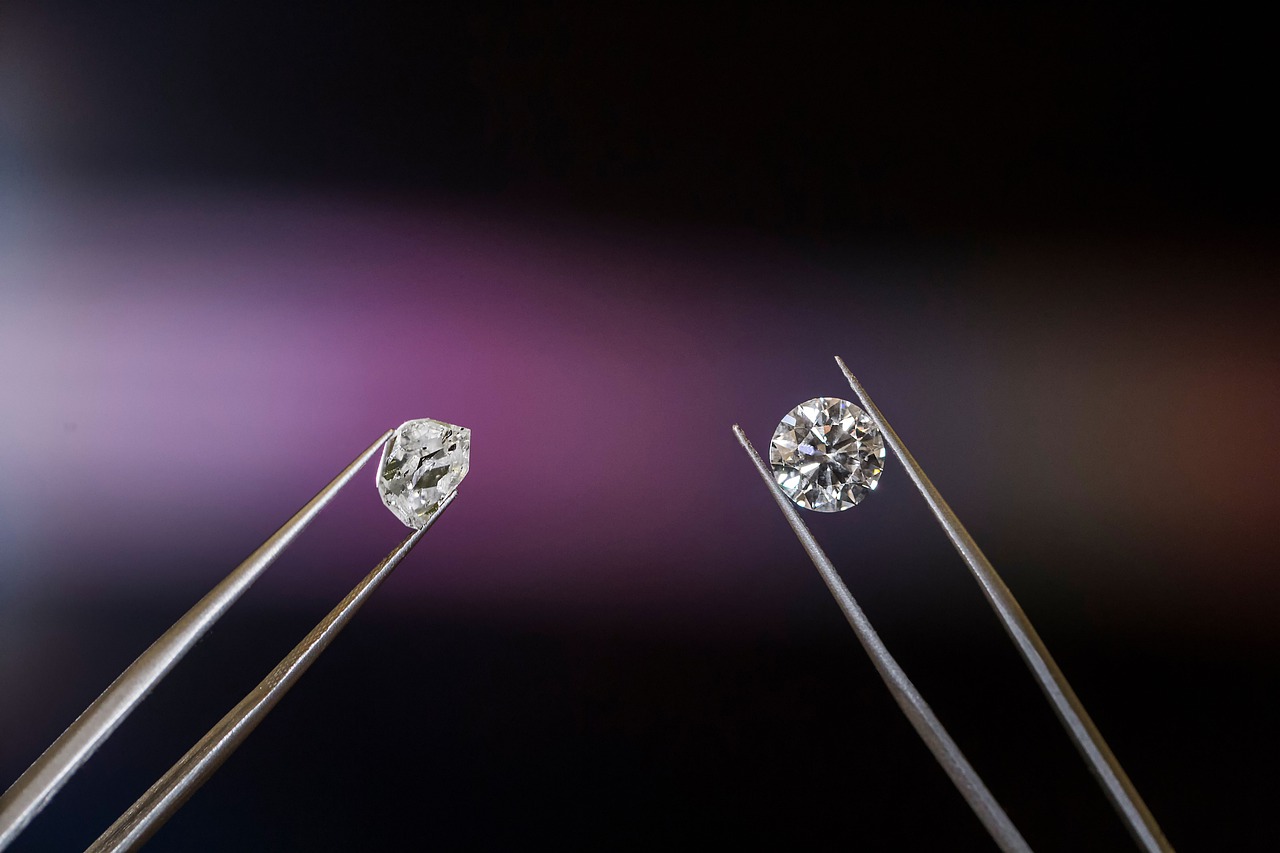Perhaps it’s the first time you’re seriously looking at diamonds. You’re shopping for an engagement ring or wanting to redesign a treasured piece of jewelry handed down from you grandmother. Something’s coming and you just want to be prepared.
You’ve asked yourself, “What do I look for? Where do the best diamonds come from? How do I know I’m getting a quality diamond?” Cummings Jewelry Designs will answer those questions, so you’ll feel confident in what you’re looking for. Let’s first start with the basics.
The Basics
We know that choosing a diamond is forever. The four characteristics, aka the 4C’s, are the starting point: carat, cut, clarity, and color. Carat is the weight: the larger the diamond, the more expensive. Diamonds can appear larger based on the shape or cut. Buyers can choose a traditional round shape or choose fancy cuts like princess or pear. The cut will be the most important decision in choosing a diamond and refers to the style of actual cuts of the individual facets. How do the cuts make the diamond sparkle? Will it bounce the light coming in creating brilliance? Color is graded on a scale from D to Z, with D being the whitest and most valuable. Clarity refers to the absence of blemishes and inclusions. These flaws are expected – after all, a diamond’s natural setting is embedded, deep in the earth. Like color, clarity is also graded from flawless (no blemishes or inclusions) to included (inclusions may affect transparency and brilliance).
Where Do I Start?
Cut. Color. Clarity. Carat. In that order.
What Am I Looking For?
Choose the right cut for shimmering, dazzling diamonds. This is the reason you’re buying a diamond, right? As light enters the diamond, the light reflects and refracts from the cuts within. A perfectly cut diamond – not too shallow and not too deep – will refract light from every angle making the entire stone truly shine. Perfectly cut means that each individual aspect of the diamond is symmetrically even. GIA cut scale ratings are excellent, very good, good, fair, and poor.
Checking for color. Jewelers will place diamonds on a tray to compare color differences. We mentioned that D is the whitest – colorless – rarest, and therefore, most valuable; Z is a lower quality diamond with yellow tones; some jewelers find lower quality grades unacceptable to sell. Color is a preference; generally, diamonds that are graded near colorless (G-J) and those with faint colors (K) are popular.
Clarity. Remember, flaws are natural and while they are too tiny to be noticeable, will impact brilliance. Engagement rings are expected to be flawless and colorless, so think of their clarity as the highest standard. Lower clarity grades may cause the diamond to appear cloudy. (You may need to look at the diamond from 6-8 inches away.) Clarity is the category you might want to bargain a little. Would you opt for lower clarity for a larger carat?
Putting It All Together
Still not sure what all this means? Here’s the fun part. Do a little research by shopping. Walk into a jewelry store. See what catches your eye and note what you think the cut, color, and clarity grades are. Are you thinking it’s an Excellent/Ideal Cut, F color, and VVS2 Clarity because it’s sparkling brilliantly? You might be surprised. Ask the sales attendant for the specifications and see how you did. Then, start comparing other diamonds at various price points.
Where Do The Best Diamonds Come From?
Honestly, “best” is a subjective term. Diamonds are mined from African countries, Canada, Russian, and Australia. While Africa is the major producer of diamonds, high-grade diamonds are also found in Canada and Russia; yet, if you’re looking for a pink diamond, you’ll find those in Australia. Today, diamonds are produced in a lab with the same characteristics as those mined.
How do you know you’re getting a quality diamond? If the diamond is dazzlingly bright, the color is not noticeable, the diamond doesn’t look cloudy, plus the carat’s weight is correct and the diamond matches the GIA grading you expected, you are getting a high-quality diamond.


